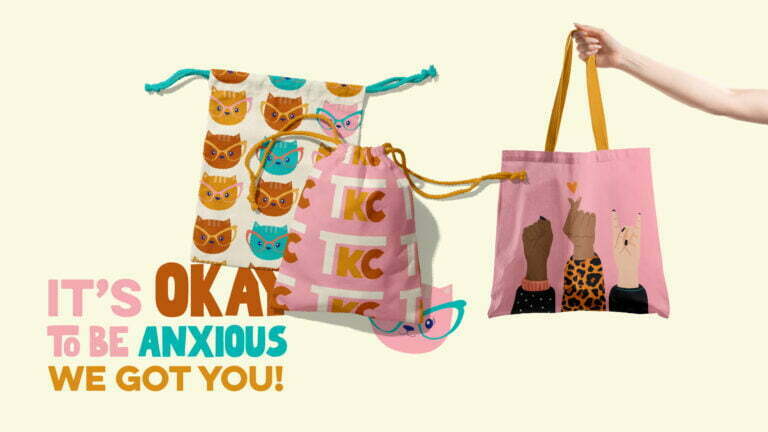Why Strong Branding is Essential for Business Success
Branding is a crucial aspect of any business. It is the face of the company, the first impression that people get when they hear your name or see your logo.
A strong brand not only helps to attract customers but also builds trust and credibility in the minds of consumers. When done right, branding can be a powerful tool that sets you apart from your competitors and creates a loyal following.
A strong brand has several key elements that make it successful. The first is consistency in messaging.
Your brand should have a clear message that resonates with your target audience and is conveyed consistently across all platforms, from social media to advertising campaigns. Another vital element of strong branding is authenticity.
Customers want to do business with genuine and transparent companies in their values and business practices. A brand that stands for something meaningful creates an emotional connection with its customers, leading to greater loyalty and higher retention rates.
A strong brand must be memorable and distinct. A well-designed logo, catchy tagline or unique color scheme can help distinguish your company from competitors in crowded marketplaces.
What Makes a Strong Brand: Key Characteristics
A strong brand should be built around several key characteristics: 1. Clear Purpose: Customers want to know what your company stands for, what it offers, who it serves, and why it’s worth their attention and investment.
2. Consistency: Your branding elements (logo design, typography selection etc.) should be used consistently across all all platforms – website, social media channels etc 3. Uniqueness: Branding has become increasingly important as consumers have more choices than ever before.
Make sure you’re differentiating yourself from what’s already out there. 4- Memorable & Distinctive:The core visual components like Logo design ,color palette
should create an emotional connection with customers,becoming a symbol of what your company stands for. 5- Relevance: Your branding should resonate with your target audience and be relevant to their interests, needs, and aspirations.
Creating a strong brand is crucial for any business hoping to stand out and succeed in today’s competitive landscape. By conveying a clear message that resonates with customers, being consistent in branding elements, maintaining authenticity, establishing uniqueness , creating memorable Logo design all can help you build a brand that inspires loyalty and trust among consumers.
Research and Analysis
Identifying Target Audience
Before you start designing your brand, it’s important to know who you’re designing it for. You need to understand your target audience in order to create a brand that appeals to them.
A good way to start is by creating buyer personas, which are fictional representations of your ideal customers. Research their demographics, interests, buying habits, pain points, and more.
This will help you tailor your branding efforts towards their needs. Once you identify your target audience, use that information as a guide when creating your brand identity.
Consider the colors, imagery, typography and messaging that would resonate with them. If you’re targeting millennials for example, you might want to use bright colors and modern typefaces.
Competitor Analysis
It’s always a good idea to look at what your competitors are doing in terms of branding. Analyze what they are doing right and wrong so that you can differentiate yourself from them.
Look at their logos, messaging, social media presence and website design. When analyzing your competitors’ branding efforts, it’s important not to copy what they’re doing but instead take inspiration from them while still being unique in your approach.
SWOT Analysis
A SWOT analysis is a tool used by businesses to analyze their strengths, weaknesses opportunities and threats. It’s an effective way of identifying areas where improvements can be made.
Conducting a SWOT analysis on your brand can help identify areas where improvements can be made or areas where the brand is excelling in comparison to competitors. For example: if one of the strengths of the business is high-quality customer service then this should be highlighted within the branding wherever possible as it gives a competitive advantage over other businesses who may not prioritize customer service as highly.
Overall research & analysis should provide clarity on the direction for how the brand should be designed. By identifying your target audience, analyzing your competitors, and conducting a SWOT analysis, you’ll have all the information you need to create a brand that stands out from the competition.
Brand Identity
Brand identity is the visual representation of your brand. It includes all the elements that are used to communicate your brand to your target audience.
The key components of brand identity are logo, color palette, and typography. These elements work together to create a cohesive and memorable brand that stands out in a crowded marketplace.
Logo design
Your logo is the face of your brand. It’s the first thing people will see when they come into contact with your business, so it’s important to get it right. A good logo should be simple, memorable, and easily recognizable.
When designing a logo, consider what sets your business apart from competitors. What makes you unique?
Incorporate those elements into the design. Think about how your logo will look on different mediums such as business cards, websites, and social media profiles.
It’s also important to consider the emotional response you want people to have when they see your logo. Do you want it to be playful or serious?
Bold or understated? Make sure your logo aligns with your brand messaging.
Color palette selection
Your color palette is another key element of brand identity. Colors can evoke emotions and create associations in people’s minds.
When choosing colors for your brand, consider what message you want to convey. Bright colors can be playful and fun while muted tones can be sophisticated and elegant.
Consider using complementary colors for contrast or analogous colors for a harmonious feel. Your color palette should consist of primary and secondary colors that work well together across different mediums such as print and digital media.
Typography selection
The font or typography selection for your branding plays an essential role in creating an impactful image through words alone without visuals (or logo). Selecting the right typeface is critical to the success of any brand identity as it portrays your company’s personality and values. It sets the tone for what people should expect from your brand.
When selecting a font, consider its legibility, readability, and personality. The font should be easy to read at different sizes and on different backgrounds.
The personality of the font should align with your brand values, mission statement, and unique selling proposition (USP). Serif fonts are often used for traditional or formal brands while sans-serif fonts tend to be more modern or casual.
Script fonts can add an extra touch of elegance or playfulness depending on their style. It’s also essential to consider how typography will look across different mediums such as print materials or digital mediums such as web pages and social media profiles.
Closing Thoughts
The elements of a brand identity work together to create a cohesive and memorable image that stands out in a crowded marketplace. Your logo design, color palette selection, and typography selection are essential components that require careful consideration when developing your brand’s visual representation. By aligning these elements with your target audience and overall messaging, you can create a powerful brand identity that resonates with customers and helps you stand out in today’s competitive landscape.
Brand Messaging
Mission Statement
Your brand’s mission statement is the heart and soul of your brand. It’s a statement that defines your business’s purpose, goals, and values.
A mission statement should be short, concise, and memorable. It should capture the essence of what your business stands for and what it hopes to achieve.
To create a mission statement, you need to think deeply about your business’s identity and its future aspirations. An effective mission statement does more than just explain what a business does; it connects with customers on an emotional level.
For example, Nike’s mission statement “To bring inspiration and innovation to every athlete in the world” is not just about selling shoes; it’s about inspiring people to find their inner athlete. Your mission statement should convey the same sense of purpose.
Tagline Creation
A tagline complements your brand’s name and mission by providing a memorable phrase that sums up what makes you different from competitors. Taglines are often used in advertising campaigns to help customers remember what makes your company unique. To create a great tagline, you must first identify your brand values then brainstorm catchy phrases that resonate with those values.
For example, Apple’s tagline “Think Different” perfectly aligns with its innovative image. Remember that taglines shouldn’t be overly complicated or confusing to understand; they should strike a chord with prospective customers while being easy enough for them to recall later when making purchasing decisions.
Voice And Tone Development
The voice of a brand is its unique personality that comes through certain word-choice and turns-of-phrase in written communications: whether on social media accounts or within advertising messages. Tone refers to how that personality speaks in specific situations: whether it is playful or serious depending on context.
A consistent voice helps create authority for the brand while tone adds the relatability that allows customers to connect on an emotional level. Developing a consistent voice and tone is essential to creating a strong and lasting brand personality.
Branding messaging is an essential part of designing your brand. A mission statement provides clarity on your brand’s purpose, while a tagline helps make it memorable.
Voice and tone development ensure that you’re communicating with customers in the right way over time. By putting thought into each of these elements, you’ll be able to create a stronger connection with your target audience and differentiate your business from competitors.
Brand Guidelines
Once you have finalized your brand identity and messaging, the next step is to develop brand guidelines. This document serves as a blueprint for how your brand should be represented across all channels and touchpoints. It ensures that a consistent brand experience is delivered to your target audience.
Consistency in design and messaging
The first aspect of brand guidelines is consistency in design and messaging. This includes guidelines for logo usage, color palette, typography, imagery, patterns, and overall visual style.
Developing a consistent look and feel helps establish a strong brand identity that connects with customers. Consistency in messaging also plays an important role in creating a strong brand.
Your messaging should be clear, concise, and aligned with your mission statement and tagline. The tone of voice should also be consistent across all platforms such as social media posts or email newsletters.
Dos and Don’ts for logo usage
The logo is the most recognizable element of your brand identity, which makes it crucial to use it correctly. Brand guidelines should outline dos and don’ts for logo usage to maintain its integrity.
Some rules include minimum sizes for the logo, clear space around the logo, proper color usage (e.g., no stretching or skewing), acceptable backgrounds or placements of the logo. If you have different versions of logos (e.g., horizontal vs. vertical), each version should come with its set of guidelines on how they can be used interchangeably without compromising consistency across different mediums.
Visual examples of brand application
In addition to providing written instructions on design elements such as colors or typography choices, visual examples can help communicate how these elements work together in practice effectively. Brand guidelines often include visual examples that show real-life applications of branding elements such as business cards, brochures, or social media graphics. These examples are helpful to ensure that third-party vendors and internal teams are representing the brand accurately and consistently.
Overall, having well-defined brand guidelines is an essential tool for maintaining a strong, consistent brand identity. Guidelines ensure that all team members and partners understand how to represent the brand visually and communicate effectively with target audiences.
Launch Strategy:
Rollout plan for new brand identity
Once you have your perfect branding design, it’s time to launch your new brand identity. This is an exciting and crucial time in the life of your company.
Rollout planning requires a great deal of strategy, coordination and collaboration. Your rollout plan should begin with a clear timeline that identifies when each phase of the launch will take place.
Depending on the scale of your brand, this could span over several months or even years. However, you should try to keep things as concise as possible to avoid losing momentum or making your audience wait too long.
It’s vital that you give yourself enough lead time so that all aspects are planned accordingly – from marketing materials to website design and social media presence – everything needs to be cohesive. You don’t want any inconsistencies in messaging or visual elements across various platforms, as this would harm your brand’s image and reputation.
Internal communication plan for employees and stakeholders
The success of any brand depends on not only its external but also its internal communications. To ensure a smooth transition, it’s important that all employees understand what the rebranding means for them and their roles in achieving it. Develop an internal communication plan that includes training sessions for employees explaining what the new branding represents, what changes they can expect from their day-to-day work duties, as well as how they can contribute towards making the transition successful.
Additionally, involve stakeholders early on in the process by keeping them informed about changes so there are no surprises down the road. It’s essential for everyone to feel a sense of ownership throughout this process; therefore transparency is key.
Don’t forget about how you will communicate with your customers during this time! Let them know ahead of time when they can expect changes to occur so they aren’t confused or caught off guard by any sudden changes.
Ongoing Brand Management:
Monitoring brand health through analytics and customer feedback
No matter how well-planned your brand rollout strategy is, brand management is an ongoing process. Continue to monitor your brand’s image and performance by keeping track of key metrics such as engagement rates, website traffic, social media followers, etc. Data-driven insights can help identify areas where you can improve the effectiveness of your branding efforts.
Keep a close eye on customer feedback – both positive and negative – and make changes as needed to ensure that your branding resonates with them. By utilizing these kinds of metrics, you can continually refine your messaging and design elements to keep the brand fresh and competitive.
This ongoing attention will not only improve the health of your brand but also keep it relevant in the marketplace. Evolve Your Brand as Needed
As markets change or new technology becomes available it is important that you evolve with it. That means revisiting some elements of the branding periodically to see if they still resonate with customers or if they need updating.
For example, a logo refresh or an updated tagline might be necessary after a few years to reflect shifting trends in consumer behavior. Conclusion
Designing a successful brand requires patience, hard work, creativity and flexibility. By following our steps outlined above when creating roll-out plans for new brands identities; developing internal communication plans for employees; monitoring health through analytics and customer feedback; evolving brands as needed to stay relevant — companies can build strong brands that stand out in today’s crowded marketplace!
Ongoing Brand Management
Once a brand is launched, it’s important to continue to monitor its health and evolve it as needed. This ongoing brand management is essential to maintaining relevance in a constantly changing market. There are two key ways to do this: monitoring through analytics and gathering feedback from customers.
Monitoring Brand Health Through Analytics
Analytics provides valuable insights into how your brand is performing. This data can include website traffic, social media engagement, and sales figures.
By analyzing these metrics regularly, you can identify trends and areas for improvement. For example, if you notice a decline in website traffic or social media engagement, it may be time to reevaluate your messaging or marketing strategy.
There are many tools available for monitoring analytics such as Google Analytics and Hootsuite Insights. These tools provide real-time data that can be used to make informed decisions about your brand’s direction.
Evolving the Brand As Needed To Stay Relevant
A strong brand should always be evolving to remain relevant in an ever-changing market. This doesn’t mean completely changing your brand identity every few years but rather making small adjustments that align with the needs of your target audience. The first step in evolving your brand is identifying what needs to change.
This can be done through customer feedback or by analyzing industry trends and competitor strategies. Once you have identified areas for improvement, you can start implementing changes while still maintaining the core elements of your brand identity.
It’s important not to make changes just for the sake of change but rather with a clear strategy in mind. Your updated branding should still resonate with your target audience and communicate what makes your brand unique.
Recap of the importance of branding
Creating a strong brand is an essential part of building a successful business. A well-designed brand identity can differentiate you from your competitors, establish credibility with customers, and create an emotional connection that drives loyalty and advocacy. Your brand is the face of your company and sets the tone for every interaction people have with your products or services.
A well-crafted brand can also help attract new customers by making your business more memorable and recognizable. Investing in branding early on can save time and money in the long run by avoiding costly rebrands or missed opportunities due to a lack of clarity around your messaging.
Final thoughts on designing a successful brand
Building a strong brand takes time, effort, and attention to detail. It’s not just about creating a visually appealing logo or catchy tagline; it’s about building a cohesive identity that reflects your company’s values, mission, and personality across all touchpoints.
Remember to stay true to your unique voice and personality throughout the process. Don’t try to mimic someone else’s style or follow trends blindly – authenticity is key when it comes to building trust with customers.
Ultimately, designing a successful brand is an ongoing process that requires regular evaluation and evolution as your business grows and changes over time. Stay open to feedback from customers, employees, and stakeholders – their perspectives can provide valuable insights into areas where you may need to adjust course in order to better align with your target audience.
Developing a strong brand identity is not only important but vital for any business seeking success in today’s competitive landscape. By following these steps outlined here today- research analysis, defining goals for messaging & voice development guidelines – businesses will be on their way towards establishing themselves as industry leaders while also staying ahead of competitors who may not have put as much thought into their branding strategies.








